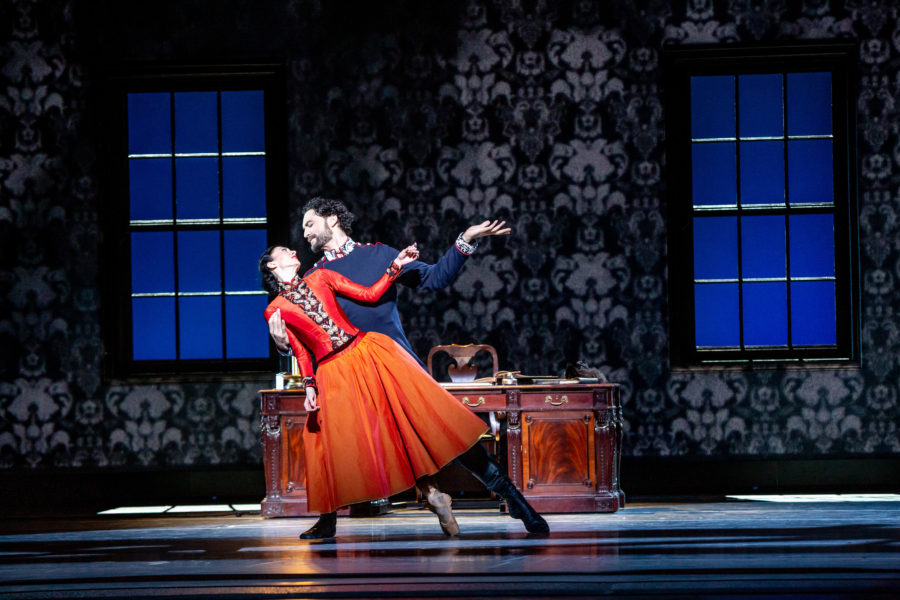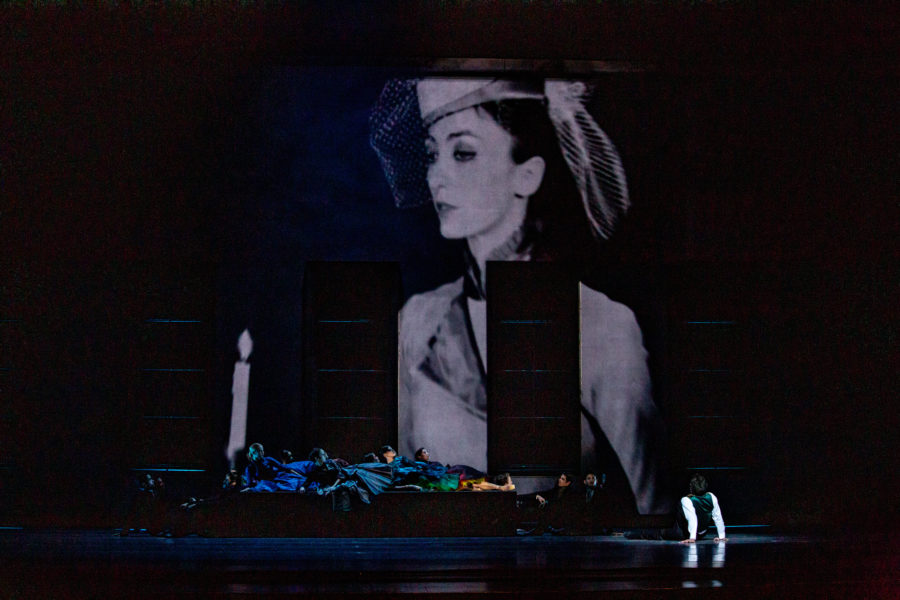On the last day of January 2019, with only about two weeks to left until the world premiere of Yuri Possokhov’s Anna Karenina, the Joffrey Ballet’s studios in downtown Chicago are a hive of activity. The organization’s key members flutter about, focused on the work at hand and multitasking in an effort to make every single minute count. Ashley Wheater, the Joffrey’s Artistic Director, is the first to pull himself away from the flurry and elegantly settles into a large, comfortable couch in a meeting room.
Even during this brief respite, Wheater speaks excitedly about Anna Karenina, a ballet that has been seven years in the making. Wheater and choreographer Yuri Possokhov know each other from their days as principal dancers at the San Francisco Ballet, where they shared a dressing room, and where Possokhov is currently choreographer in residence. When Wheater became Artistic Director of the Joffrey Ballet 11 years ago, Possokhov was one of the first choreographers he contacted about creating new work for the company. The result of this personal and professional relationship has been the creation of spellbinding short choreographies, including Bells and Seagull.
Although the Joffrey has previously staged Possokhov’s full-length Don Quixote, Anna Karenina is the first long ballet Possokhov has choreographed for the Joffrey in a co-production with the Australian Ballet. Wheater knew that this would be an ideal project for Possokhov because Anna Karenina is one of the most iconic works to spring from Russian literary tradition. It was an opportunity for the choreographer to delve into his heritage.
“Shchedrin, the composer, had written a score for Maya Plisetskaya’s Anna Karenina, but I found it for me just a little bit dated and a little too Soviet,” recounts Wheater when remembering how the project got off the ground. Although Wheater and Possokhov considered using existing classical music for their new Anna Karenina, it was ultimately Possokhov who brought on 35-year-old Russian composer Ilya Demutsky – who he’d worked with previously on the piece A Hero of Our Time for the Bolshoi Ballet – to create an entirely original score.

Before Demutsky could get to work on the score, a libretto had to be created. “In the early 80’s, I was dancing with the Australian Ballet in a version of Anna Karenina, and it seemed overly complicated. I think that you can get lost in the minutia, but it is an amazing book, and I have seen several versions since, but none of them have really spoken to me,” comments Wheater when discussing how the Joffrey’s team considered translating a long and complex novel into a nonverbal work of dance.
Again, Possokhov looked to Russia for the solution, bringing on Moscow-based theatre director and playwright Valeriy Pecheykin, who Wheater describes as a “very brilliant young guy, very successful,” and whom he says had an intimate knowledge of the book that allowed him to determine “what scenes would make up a full narrative of the story.”
With the libretto and, subsequently the score, in hand, it was time to work on the choreography. “Yuri feels very comfortable with the company, and they really admire him, and I think that they are able to walk into the studio, and even if Yuri says, ‘guys, I don’t have any ideas today,’ what happens is that he does, and they start, and one feeds off of the other,” explains Wheater of the experience.
Possokhov, who joins the conversation after a somewhat tumultuous back-and-forth with the ballet’s visual designers, also credits the dancers and the relationship he has with them for helping to bring his vision to life. “For this project, I needed dancers with an open mind. The creativity to make their bodies and their mentalities their own. There is so much variety in this company, classical, contemporary, sometimes coocoo things. There are many opportunities here,” asserts Possokhov regarding his experience working with the Joffrey.
However, he also readily admits that one dancer, in particular, has captured his attention. Possokhov describes Georgian ballerina Victoria Jaiani, who is one of three Joffrey dancers to perform the role of Anna, as his “muse.”
“She’s a strong person. Sometimes it’s hard with her. I have to adjust myself to her – not her mood- but her feelings at that moment. I am talking about a very, very close relationship in the studio with her. I don’t care with some dancers when I am working. You adjust to me, but with her, I have to accept that it isn’t just me, it’s her too,” explains Possokhov, while also conceding that he can often be brusque when working with dancers, although his intention is never to offend.
When an apologetic Jaiani rushes into the conference room upon wrapping up a rehearsal that has run long, she is surprised and moved to learn that Possokhov has called her his muse. “To be Anna in Yuri’s Anna Karenina is beyond anything I’ve ever hoped for. It is the highlight of my career so far to have a ballet created on me,” says Jaiani, who first discovered Possokhov when she was a ballet student.

“Growing up in the Republic of Georgia in the late 80’s and early 90’s was a difficult situation with the civil war and being part of the Soviet Union. The one thing that Georgians have is that they always support culture, ballet, theatre, opera. It’s number one. No matter how hungry people were, with literally no food or money, the ballerinas would dance for free, they would still do the shows. Nobody could afford a ticket back then, so they would let us students in for free and allow us to sit on the stairs of the theatre. The biggest ballet stars in the world would come to give performances, so I got to see Yuri do the Giselle pas de deux, and it was literally the most beautiful thing I have ever seen. His artistry was mind-blowing. And they were still in costumes and sweating, but they were so nice to stay and sign everybody’s little books, so I got his signature, and I thought this is not enough, so I got right back in line, folded the paper and had him sign another time,” remembers Jaiani.
Jaiani describes Possokhov as “brutally honest,” but declares that it is something she loves about him. “There is no sugar coating it. Sometimes it’s hard because honesty can hurt, but it’s always professional. It’s his choreography, and he has to get his vision out of me, and sometimes you try something out, and it doesn’t work. It can be flustering, but then you come back the next day and do it again. He’s passionate, and I am passionate, and it’s great. For me that’s the way to create something dense and real.”
Yuri Possokhov’s Anna Karenina made its world premiere on February 13, 2019 at Chicago’s Auditorium Theatre, completing a 10-performanc run on February 24. The Australian Ballet will be presenting the Australian debut of the ballet in 2020.


